Ducati allowed me to walk the production line of the 1199 Panigale, arguably the most advanced V-Twin in production today. The assembly line is that of the Desmosedici V-Four, completely refurbished and retooled. If it weren't for the scent of special sealants and lubricants, the place would pass for a surgical operating theater. When I stepped into it, my mind went back to when I was working at Ducati.
If I didn’t know that I was in the same Ducati buildings I had walked through 40 years ago, I might have thought that I’d entered the highway to Bologna in the wrong direction and I had ended up in Turin, at Alenia Aerospace Industries. Same neatness, same precision, same digitally managed tools, same highly qualified young technicians who’d graduated from the best technical institutes.
In my day at Ducati, the factory air was dark and thick with greasy fumes, the tooling was basic, and the workers didn’t need any qualification because each one was trained to endlessly duplicate the same operation. Everything was smeared with grease, from the workbenches to the floor. It was like being at a factory at the dawn of industrialization, as Charles Dickens described it in his books—and quality control was contemporary to Charles Dickens’ time too.
Today, it couldn’t be more different. After following the complete assembly of one particular Panigale 1199 Power Twin, I’m ready to swear on a stack of Bibles that this is one of the most painstakingly built engines in the motorcycle industry.
The sequence of assembling operations is executed by a two-man team, as only happens with very special engines; think of the Chevrolet LS7, the 427 cu. in. 505-hp V-Eight that powers the Corvette Z06 and is hand-built at General Motors Performance Build Center in Wixom, Michigan. The two technicians know every detail of each engine they build. At full steam, this high-tech assembly line will deliver 80 Ducati 1199 Panigale Power Twins per day.
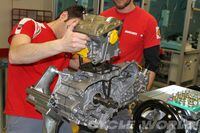
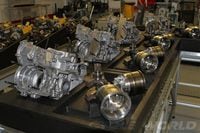
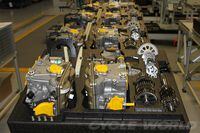
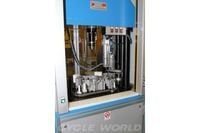
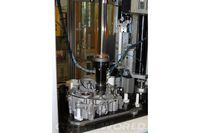

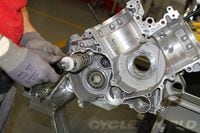
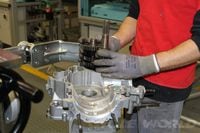
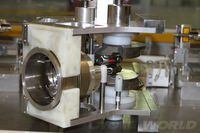
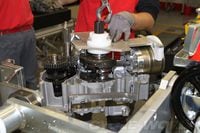
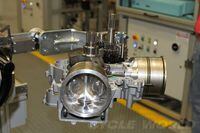
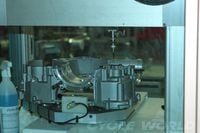
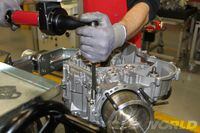
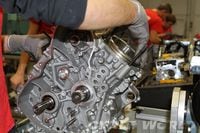
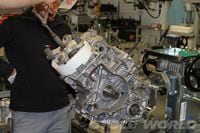
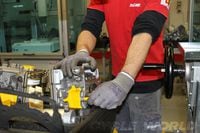
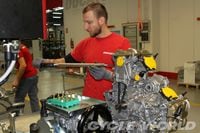

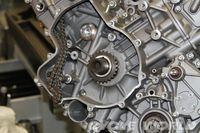
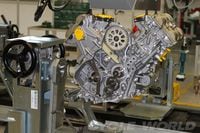
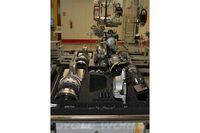
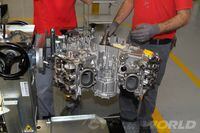
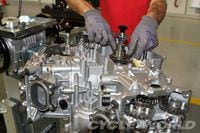
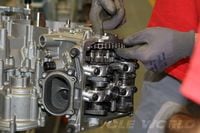
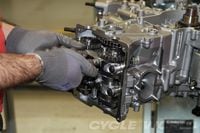
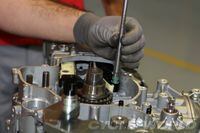
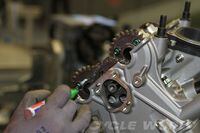
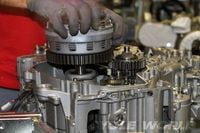
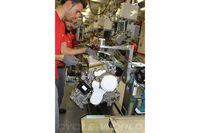
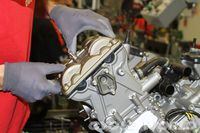
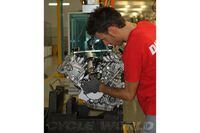
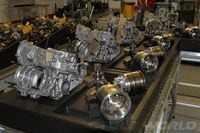
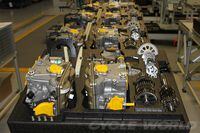
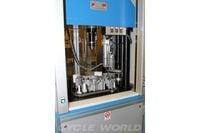
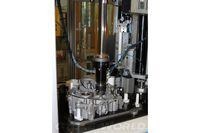
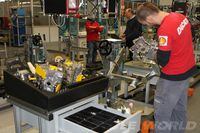
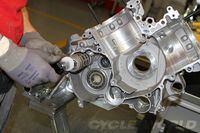
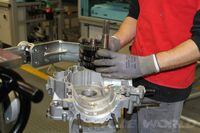
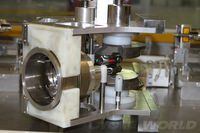
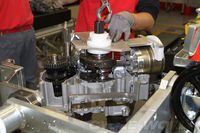
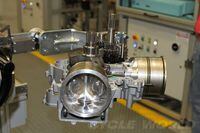
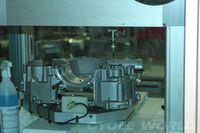
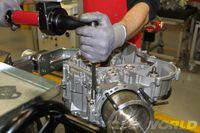
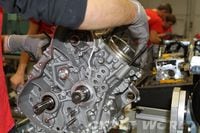
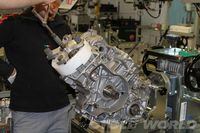
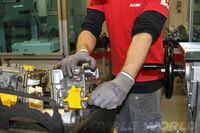
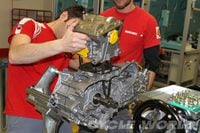
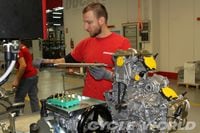
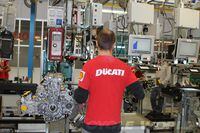
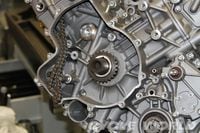
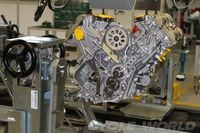
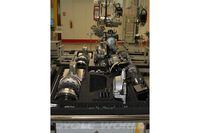
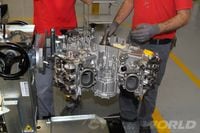
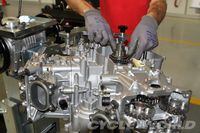
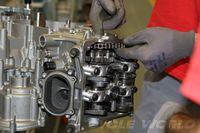
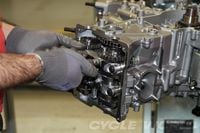
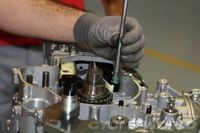
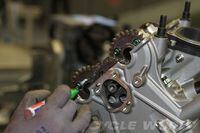
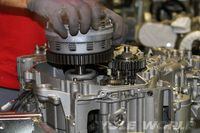
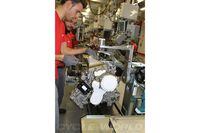
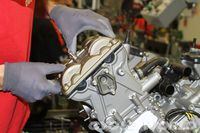
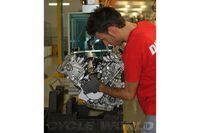
/cloudfront-us-east-1.images.arcpublishing.com/octane/BN74KGDB2NDNFJ65JMYE45C6YQ.jpg)


/cloudfront-us-east-1.images.arcpublishing.com/octane/3ZKIVLW4BBHV7FSYYODYL55OIQ.jpg)
/cloudfront-us-east-1.images.arcpublishing.com/octane/BW43XOMS5RA2RB5QLEXD4NTNYE.jpg)
/cloudfront-us-east-1.images.arcpublishing.com/octane/GMG6KKHK4ZDLBFILW6L5UHJC4M.jpg)
/cloudfront-us-east-1.images.arcpublishing.com/octane/6BQBLTD22JHEFH2OBE5ZGY74NU.jpg)
/cloudfront-us-east-1.images.arcpublishing.com/octane/OVNMRSCISBB2FG4GQLQAYN56MU.JPG)
/cloudfront-us-east-1.images.arcpublishing.com/octane/7KSW4EGJWBGKFA62G4OARG7POU.jpg)
/cloudfront-us-east-1.images.arcpublishing.com/octane/OX5X6DCDXRBHBDLSLR2PRRJMSE.jpg)
/cloudfront-us-east-1.images.arcpublishing.com/octane/4FN63Z3XEVBMBDP3W6GFPLICRU.jpg)
/cloudfront-us-east-1.images.arcpublishing.com/octane/2CYHINRF5RA7VBO3PRJPVU5IBE.jpg)
/cloudfront-us-east-1.images.arcpublishing.com/octane/X7JX7MGA5ZBCDGDVAA2LKUGCTQ.jpg)
/cloudfront-us-east-1.images.arcpublishing.com/octane/7TO4TMPM6JBJJPBWUMT35TJHHA.jpg)
/cloudfront-us-east-1.images.arcpublishing.com/octane/3CANJMY47BH6BNPDAODAUD3CWQ.jpg)
/cloudfront-us-east-1.images.arcpublishing.com/octane/4IGJJZ6HWNAIHJ343U7CUH4WC4.jpg)
/cloudfront-us-east-1.images.arcpublishing.com/octane/BP5NOY5NPVGOZIDU5FN7M42JMA.jpg)
/cloudfront-us-east-1.images.arcpublishing.com/octane/XH2ETEU4NVGDFNQO2XT2QQS5LU.jpg)
/cloudfront-us-east-1.images.arcpublishing.com/octane/TGJNNI474VFXFMS3YQDRIEKEFY.jpg)
/cloudfront-us-east-1.images.arcpublishing.com/octane/5QAQVX645VA3LKJFZ3C4Y2DTPI.jpg)
/cloudfront-us-east-1.images.arcpublishing.com/octane/45O2MZU525ATPB5GRG422ZTU54.jpg)
/cloudfront-us-east-1.images.arcpublishing.com/octane/WEWXDN2F2BD3DJYUJJX4RZIALA.jpg)
/cloudfront-us-east-1.images.arcpublishing.com/octane/VPDWRXQWRVGULBY7Z3JRGPTR2I.jpg)
/cloudfront-us-east-1.images.arcpublishing.com/octane/56QNDMMUA5EA3OCJINPCI2QZGA.jpg)